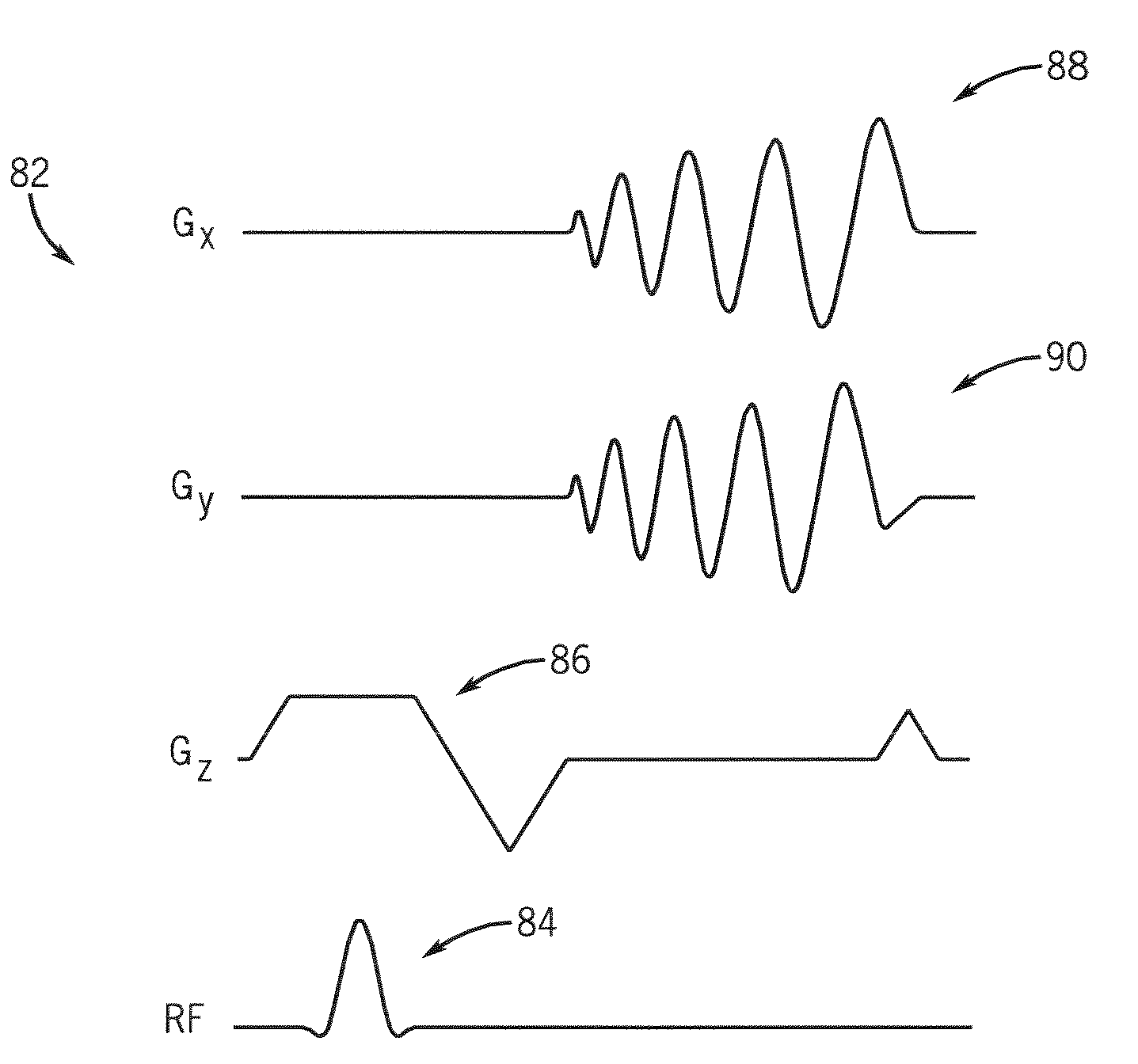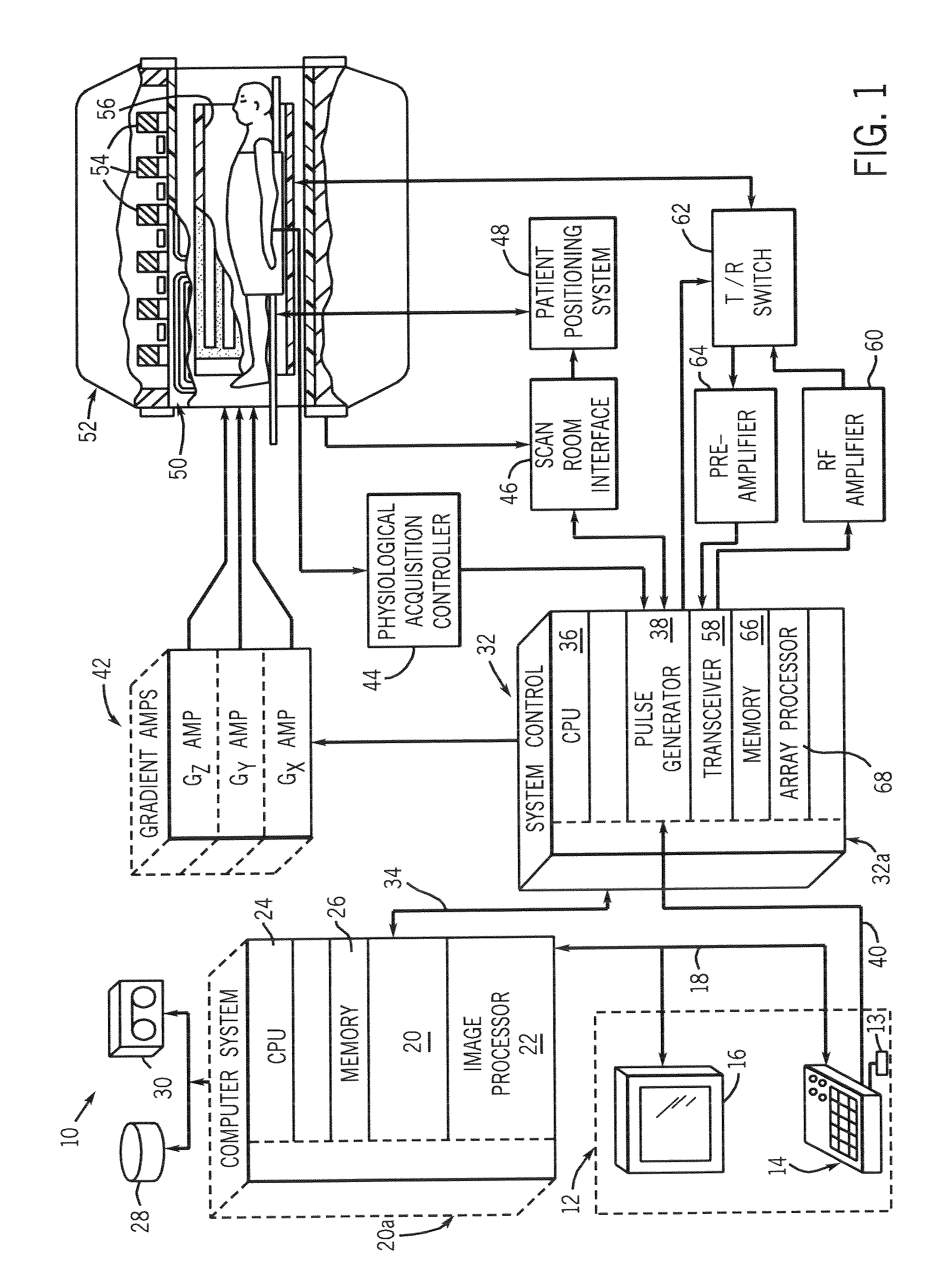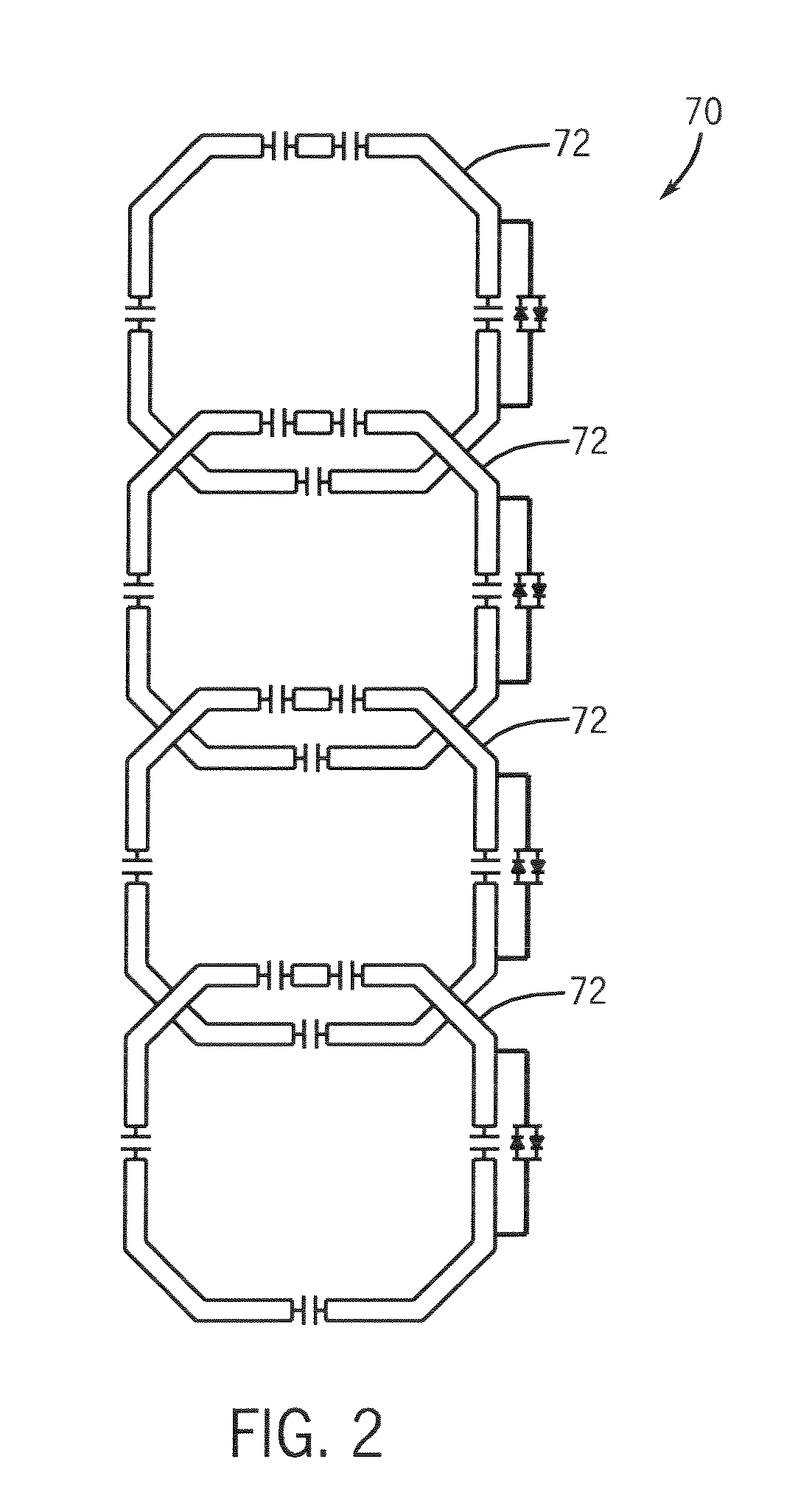Method and apparatus of M/r imaging with coil calibration data acquisition
- Summary
- Abstract
- Description
- Claims
- Application Information
AI Technical Summary
Benefits of technology
Problems solved by technology
Method used
Image
Examples
Embodiment Construction
[0022]A system is shown to acquire MR data consistent with the principles of parallel imaging. In this regard, the imaging system includes, as will be described in greater detail below, a phased-array coil arrangement to acquire MR data from an FOV. As described above, parallel imaging is a data acquisition technique that is often used for those applications where it is desired to expedite the acquisition of MR data from a subject. Further, the present invention will be described with respect to a spiral sampling of k-space. One skilled in the art will appreciate that the present invention is equivalently applicable with other types of fast acquisitions such as FSE, FGRE, EPI, and the like.
[0023]Referring now to FIG. 1, the major components of a preferred magnetic resonance imaging (MRI) system 10 incorporating the present invention are shown. The operation of the system is controlled from an operator console 12 which includes a keyboard or other input device 13, a control panel 14,...
PUM
 Login to View More
Login to View More Abstract
Description
Claims
Application Information
 Login to View More
Login to View More - R&D
- Intellectual Property
- Life Sciences
- Materials
- Tech Scout
- Unparalleled Data Quality
- Higher Quality Content
- 60% Fewer Hallucinations
Browse by: Latest US Patents, China's latest patents, Technical Efficacy Thesaurus, Application Domain, Technology Topic, Popular Technical Reports.
© 2025 PatSnap. All rights reserved.Legal|Privacy policy|Modern Slavery Act Transparency Statement|Sitemap|About US| Contact US: help@patsnap.com



